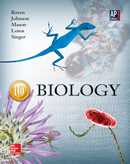1 A) These cells can develop into any tissue in the animal. B) Stem cells give rise to a single cell type, and so are predictable in culture. C) These cells are easily obtained from the outer cell layer of a 5 day old embryo. D) It is simple to alter the genetic content of these cells by use of microinjection or other technologies. E) These cells are particularly sensitive to environmental cues and so can be coached into new, rarely expressed, developmental pathways. 2 A) Remove some cells and see if they form a new individual in a petri dish. B) Place them next to undifferentiated cells and see whether these other cells change their developmental fate. C) Introduce a new nucleus to the cells in question to see if they alter their developmental pathway. D) Extract mRNA from the cell to see what kinds of gene expression have occurred. E) Transplant cells from one end of an embryo to another and see if the structure which forms was consistent with the source location or the transplanted position. 3 A) The cell would develop normally, although slowly. B) An inflammation response would activate the immune system, which would clear away the antibodies to allow development to continue. C) Cell migration would occur too quickly because the ECM would not hold together appropriately. D) Cell proliferation would increase because the cells would drift apart, activating cell division programs which are repressed by high cell density. E) Binding of cells to fibronectin in the ECM is blocked and gastrulation is inhibited. 4 A) There is almost no G1 stage in the blastomere cell cycle. B) There is almost no G2 stage in the adult cell cycle. C) Cyclin is not involved in regulating cell divisions in the blastomere cells. D) The zygote does not contain much mRNA for cyclin. E) All of the above are legitimate differences between adult and blastomere cell cycles. 5 A) Therapeutic cloning inserts specific genes to block the immune system's ability to reject the new tissue. B) Therapeutic cloning results new tissues unrecognizable to the immune system. C) Blastomeric cells "learn" from adjacent tissues the correct developmental patterns necessary to immolate "self" markers. D) Since stem cells are cloned from a person's own tissues in therapeutic cloning, they pass the immune system's "self" identity check, and the body readily accepts them. E) Therapeutic cloning has no influence on tissue acceptance or rejection. 6 A) Because animals are the only creatures which show bilateral body plans, these genes are required for their proper development. B) The presence of a Hox gene is necessary and sufficient for the establishment of an animal lifestyle. C) Because more complex body plans are associated with clusters of Hox genes and evolution requires increasing complexity, these genes are selected for naturally. D) An organism line which is ancestral to contemporary animals benefited from the developmental regulation afforded from the Hox genes, and these benefits have persisted through evolutionary time. E) All of the above are plausible explanations. 7 A) The brain would become larger and more complex. B) The dorsal/ventral axis would fail to develop properly. C) Embryonic stem cells would differentiate more quickly. D) Assymetric cell divisions would occur less frequently. E) Webbed fingers and toes might be seen in the newborn. 8 A) Differentiation B) Growth C) Division D) Death E) Development 9 A) The number, timing, and orientation of cell divisions; B) Cell growth and expansion; C) Changes in cell shape; D) Cell migration; and cell death. E) All of the above 10 A) Plant-specific Hox genes. B) Bicoid genes C) Nanos genes D) Meristematic genes E) MADS-box genes. 11 A) apoptosis. B) programmed cell death. C) lysis. D) necrosis. E) Morphogenesis 12 A) Bicoid B) Macho-1 C) Fraternal mRNA D) Nanos E) Dorsal transcription factor 13 A) are equal in size to the original zygote. B) become smaller and smaller. C) grow larger and larger. D) migrate to positions of future development. E) begin immediate differentiation. 14 A) Epiderm B) Endoderm C) Neural tissue D) Ectoderm E) Notoderm 15 A) at the same stage in development. B) from the same organism. C) at the same stage of the cell cycle. D) fused in vivo. E) unable to undergo cell division.





